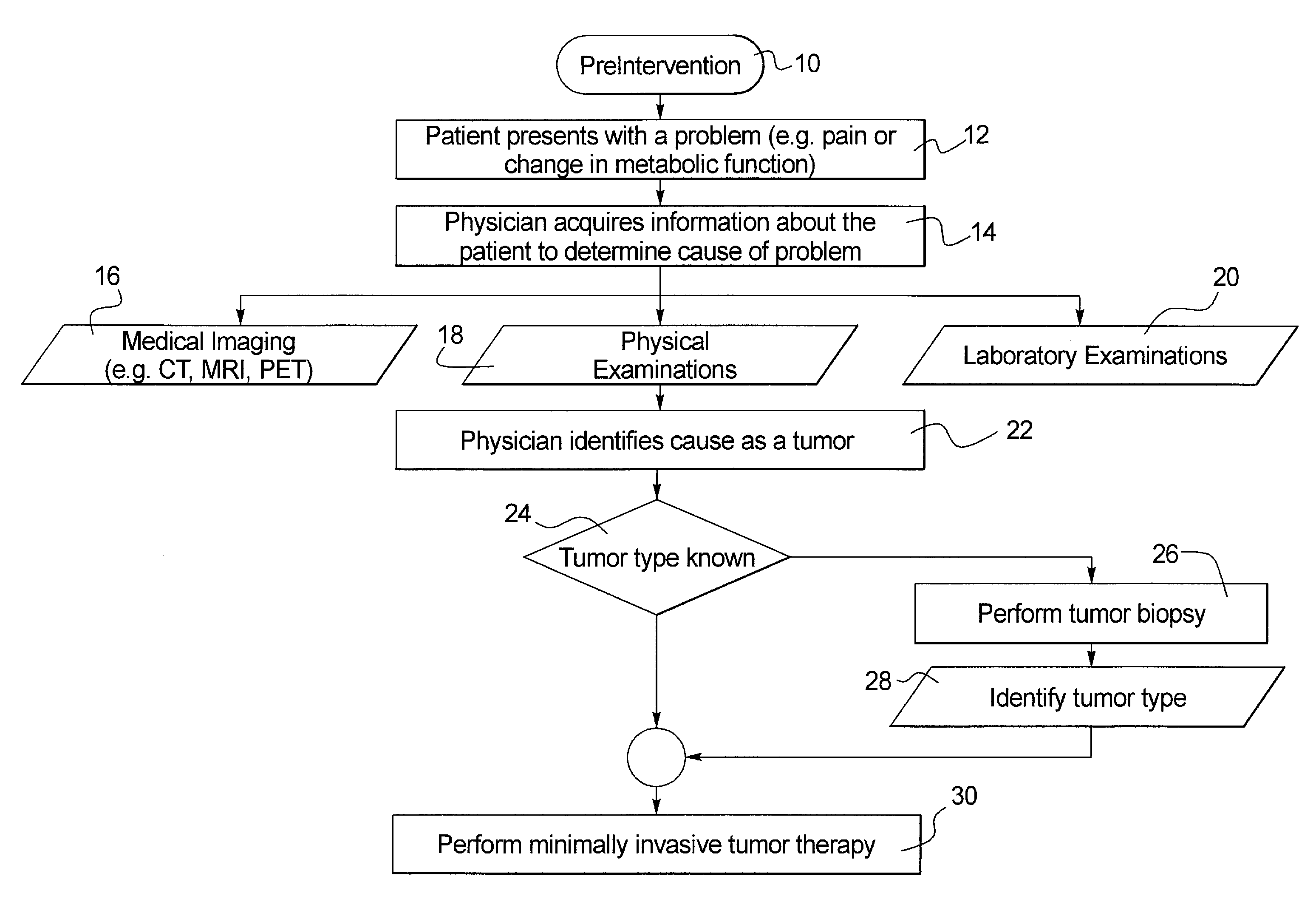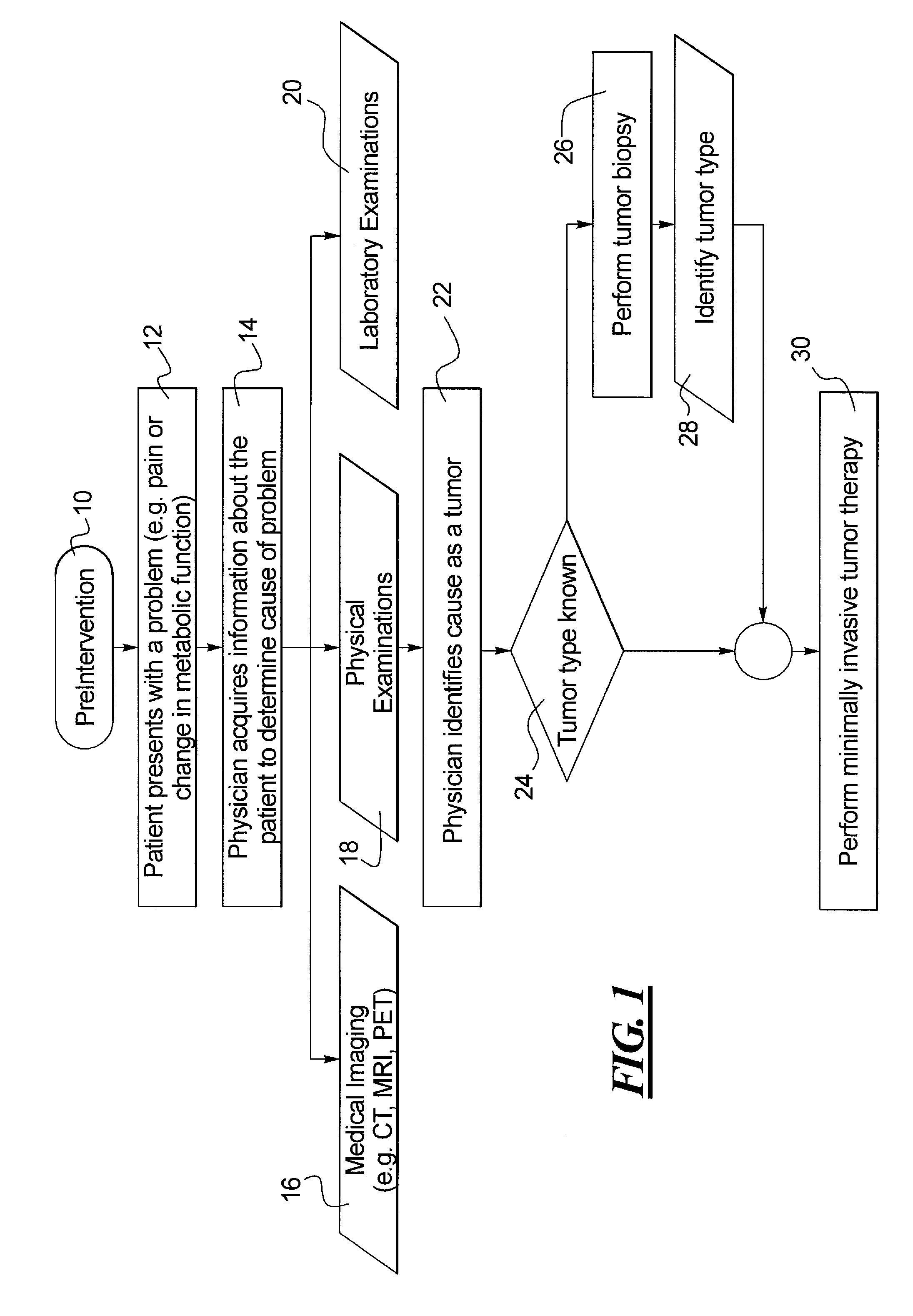Method for minimally invasive medical intervention
a medical intervention and minimally invasive technology, applied in the field of medical intervention for patients, can solve the problems of inability to obtain data using conventional ct or mri imaging with intravenous injection, damage to the unintended area of heated blood, and decrease the effectiveness of ablating tissu
- Summary
- Abstract
- Description
- Claims
- Application Information
AI Technical Summary
Benefits of technology
Problems solved by technology
Method used
Image
Examples
Embodiment Construction
[0016]In FIG. 1, workflow process is performed for a patient who in this example is suspected of having a tumor. In the first step, a pre-intervention is begun at 10. The patient presents with a problem, such as a pain or a change in a metabolic function, at step 12. In step 14, the physician acquires information about the patient to determine the cause of the problem. The acquisition of information may include any or all of the steps of performing a medical imaging, such as a CT (computer tomography) imaging, an MRI (magnetic resonance imaging), or a PET (positron emission tomography) imaging, as shown at 16, a physical examination of the patient, at 18, and laboratory examinations or tests, at 20. Any images acquired in this pre-intervention phase are preferably stored for later reference.
[0017]After completing one or more of these investigations, the physician identifies the cause as a tumor, at step 22. At 24, a decision is made as to whether the tumor type is known. If not, a t...
PUM
 Login to View More
Login to View More Abstract
Description
Claims
Application Information
 Login to View More
Login to View More - R&D
- Intellectual Property
- Life Sciences
- Materials
- Tech Scout
- Unparalleled Data Quality
- Higher Quality Content
- 60% Fewer Hallucinations
Browse by: Latest US Patents, China's latest patents, Technical Efficacy Thesaurus, Application Domain, Technology Topic, Popular Technical Reports.
© 2025 PatSnap. All rights reserved.Legal|Privacy policy|Modern Slavery Act Transparency Statement|Sitemap|About US| Contact US: help@patsnap.com



